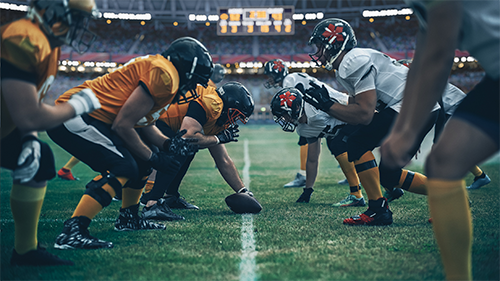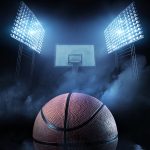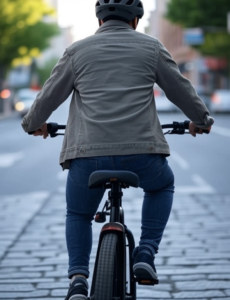Football season is upon us, which means raging fans, sports betting, and an overabundance of pizza and wings. There is no better way to get into the spirit of the season than seeing your favorite team in the stadium stands. While the chaos of the crowd is exciting, it may be a distraction from a problem that is more common than you think: slip and fall injuries. In fact, slip, trip and fall lawsuits are the third most common type of personal injury lawsuit, after auto accidents and medical malpractice. Next time your Sunday consists of a stadium filled with cheering and chanting, you may want to watch your step.
Although most stadium fans don’t stop to think about a slip and fall injury, a mix of unstable bleachers and spilled drinks can result in a fall. Some common causes of sporting event fall injuries include beverage and concession spills, cracked walkways, broken seats, absent guardrails, aggressive crowds and more. Slip and fall accidents can result in back injuries, broken bones, bruises, and concussions.
Slip and fall accidents are not just restricted to stadium fans either. In 2015, former NFL star running back Reggie Bush was awarded $12.5 million in damages, after a slip and fall accident in an NFL Stadium. Bush was returning a punt for the San Francisco 49ers and soon after was pushed out of bounds. Bush fell on an exposed strip of concrete behind the visiting team’s bench and tore the lateral meniscus in his left knee. The injury effectively ended Bush’s season and he filed suit claiming losses for the injury sustained and future earning potential. The St. Louis Rams organization, was found negligent for keeping the ring exposed, given that it was in a reasonable distance of travel from the field during active play, and were 100% liable for the incident. Although as fans, we may not be catching passes from out of the backfield, this case shows that the stadium owners and operators can be held liable for creating unsafe conditions within the stadium that result in slip and fall scenarios.
Property owners and operators have a duty to maintain the safety of their stadiums and can be held liable if someone is injured at the venue due to negligence. This can range from cleaning up a spill promptly to fixing a leaky water pipe in the bathroom. Fortunately, stadium owners can take certain steps to prevent slip and fall injury lawsuits.
Abiding by the following are recommended:
Keep clutter away from the floor and entryways.
Provide adequate lighting on walkways, stairs, halls, ramps, and exits.
In a timely manner, alert the public of spill accidents and other hazards using safety signs.
Clean up spills as soon as made aware of and sweep frequently.
Check your walking surfaces for uneven areas, holes, and other damages.
Implement safety plans and protocols including regular inspection and maintenance checks, specifications for safety and other equipment, and safety standards and practices.
OSHA (The Occupational Safety and Health Standards) provides the following regulations outline for safer surfaces:
Keep workroom floors clean, orderly, and dry.
Maintain a functional drainage system if working on wet surfaces.
Keep surfaces free of hazards such as sharp objects, loose boards, corrosions, leaks, spills, snow, and ice.
Ensure that the working surface can support the maximum intended load.
Provide safe means of entering and exiting from walking surfaces.
Inspect the working surface to keep it in good condition.
Repair hazardous floors as soon as possible.
Slip and falls are rarely a straightforward matter. There are a variety of factors that can contribute to a slip and fall event ranging from improper property maintenance and upkeep to an individual’s carelessness when walking. If you become involved in a slip and fall case, CED’s engineering experts are here to analyze the scene and provide clarity on the situation.





